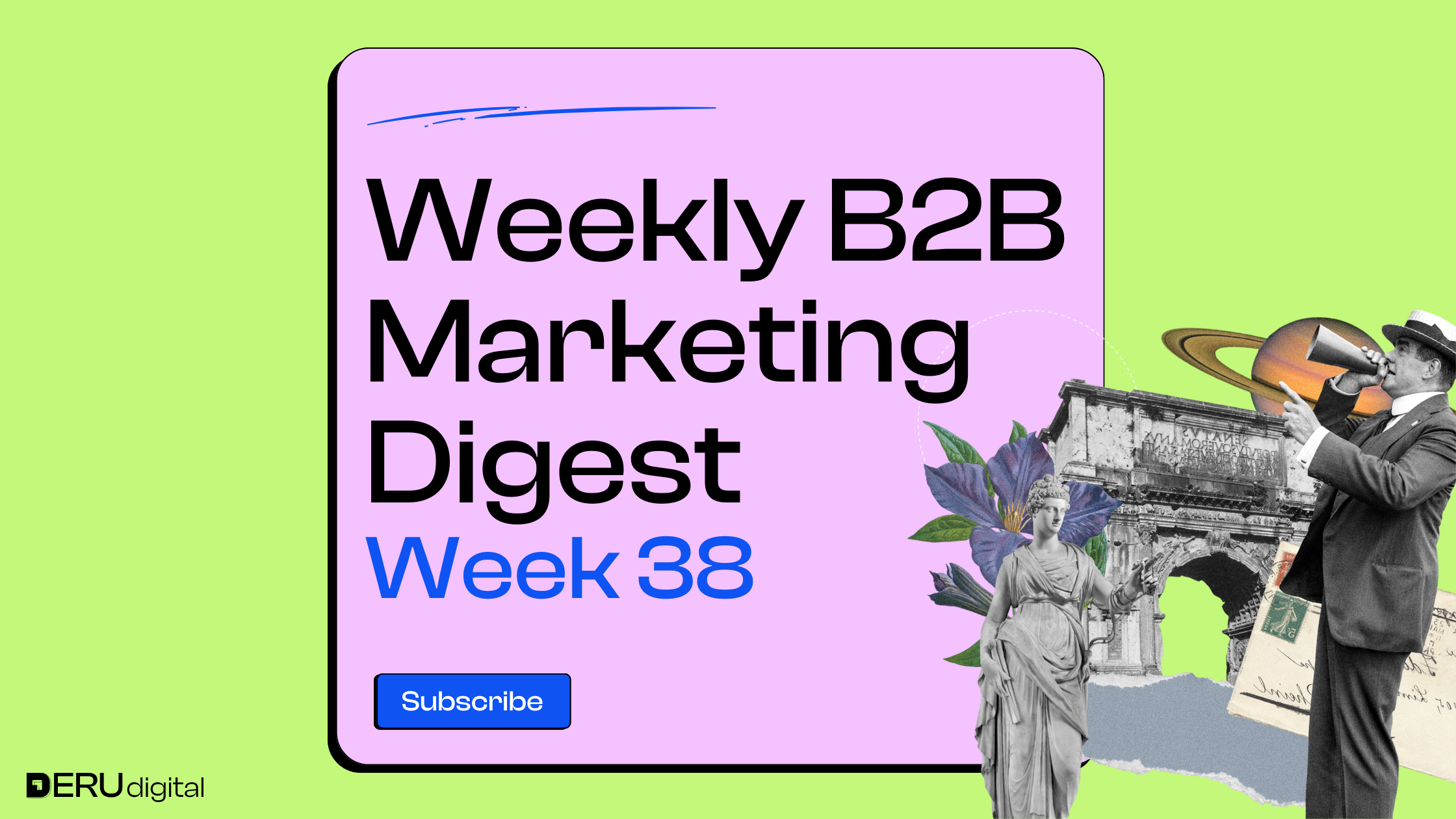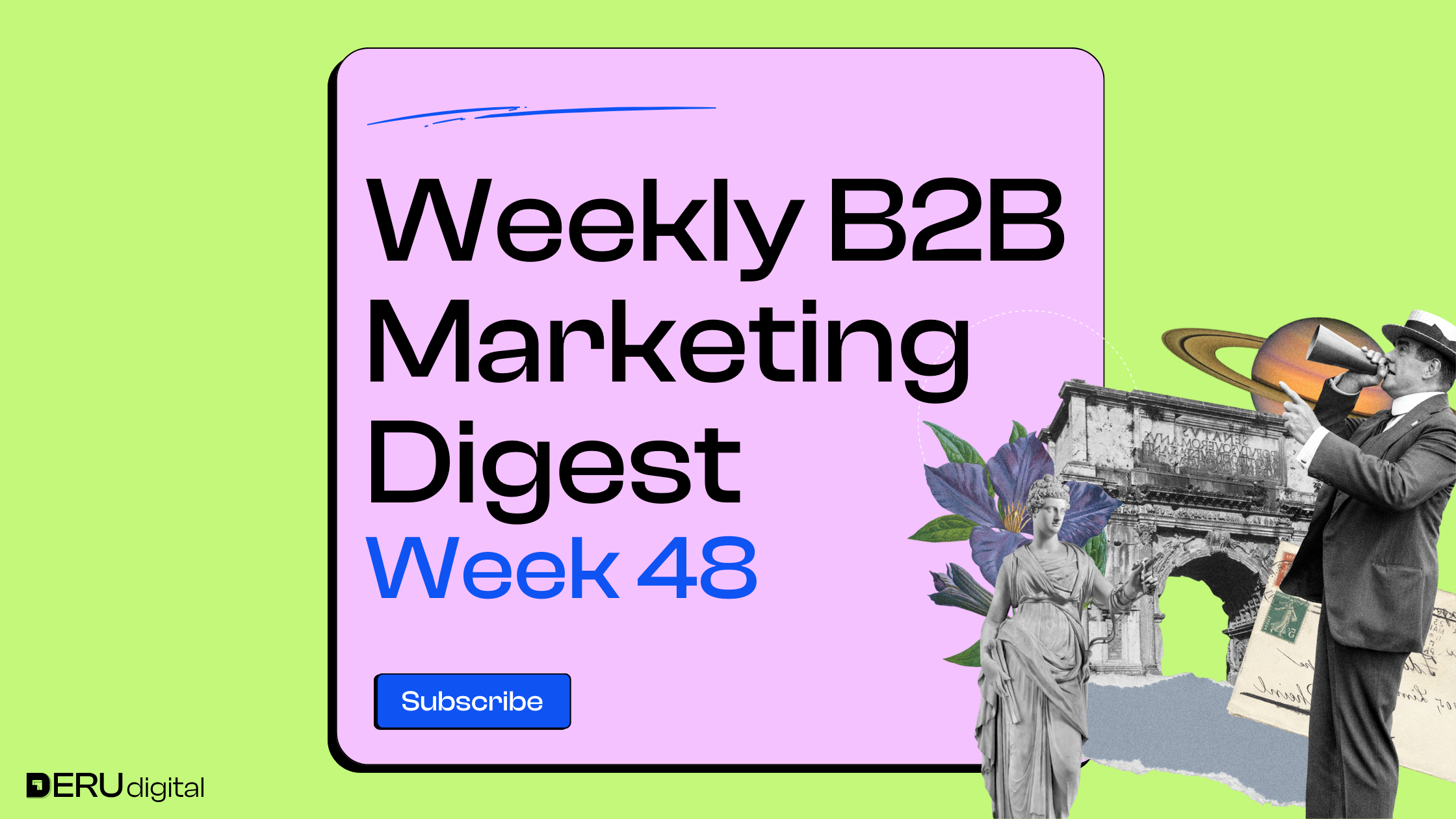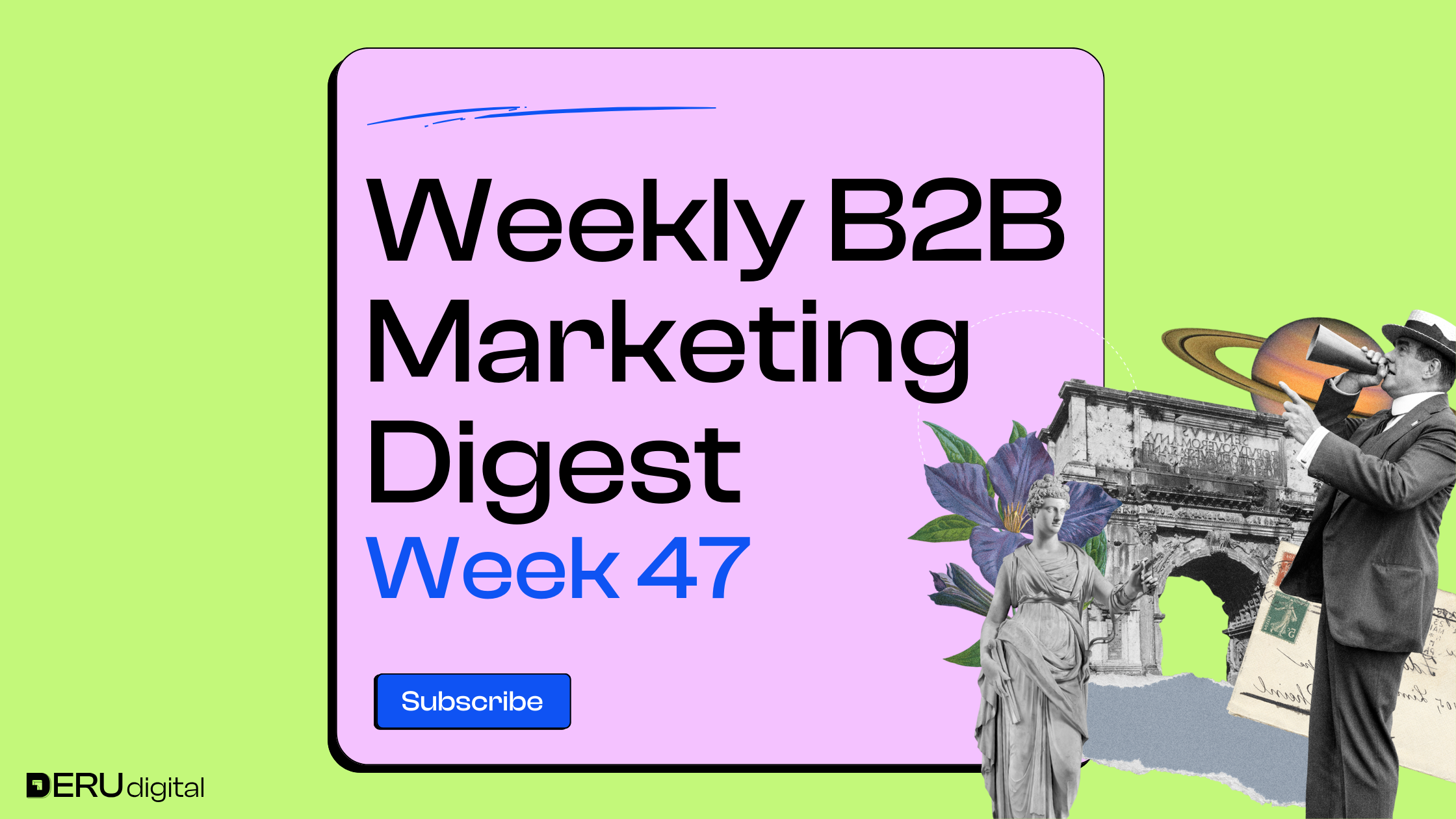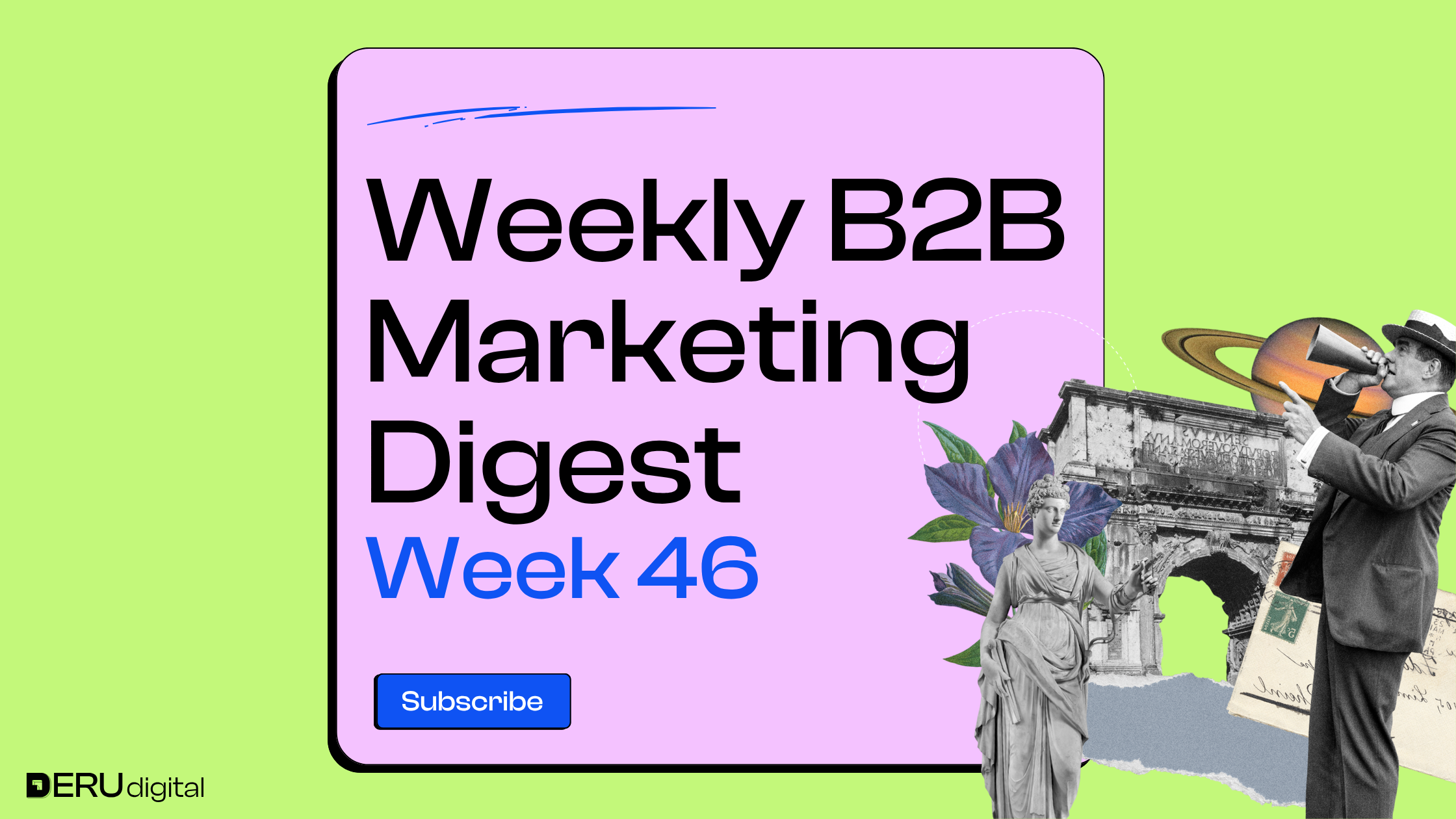INSIGHTS FROM EXPERTS ON LINKEDIN
Jonathan Bland questions why companies still split pipeline between sales and marketing when both teams usually influence the same accounts. He lays out the pros (ownership, reporting, resource allocation) and cons (conflict, gaming attribution, ignoring the real buyer journey). His view: aligning both teams on shared revenue goals would better reflect how buyers actually buy and foster real collaboration.
Adrian W. argues that performance marketing often just takes credit for sales that would’ve happened anyway, pointing to the well-known eBay search ads experiment as proof. He warns that boards keep doubling down on wasted spend while neglecting what really drives growth: brand, reach, and creativity. Marketers, he says, need to do a better job of “marketing marketing” so the business understands how it truly works.

Dale W. Harrison pushes back on the idea that “creative quality” alone can transform growth, calling it a weak force compared to sheer reach. He notes that while ads can usually be made slightly better, huge creative gains are rare, expensive, and quickly overshadowed by the scale advantage of bigger brands. For most businesses, the smart move is to aim for good-enough creative that maximizes profit while investing in broader reach.

Charlie de Thibault explains how MyTelescope helps him show clients whether they’re in a growing or shrinking category, how their share of search stacks up, and what keywords or competitors are driving results. He says it’s especially powerful for proving the impact of upper-funnel campaigns that attribution usually misses. Branded queries, spikes, and product-level battles all help reveal what’s really working beyond just conversion data.

Steffen Hedebrandt shares 15 hard-learned lessons from 15 years in marketing, from over-trusting ad platforms and spreadsheets to undervaluing intent, skipping UTMs, and chasing hype over testing. He points out how easy it is to either over-celebrate early results or pull the plug too soon on long-term plays. His list is a reminder that mistakes are part of the process, but learning from them speeds things up.
Morten Klank recalls how Unity’s 2023 attempt at a new pricing structure sparked protests, drove usage down, and wiped 60% off its stock value before the company reversed course. He stresses that pricing changes aren’t just a marketing challenge—they touch every part of a business from product to finance to leadership. He’s hosting a webinar to share how transformation management principles can help companies successfully manage pricing and packaging shifts.
WHAT'S NEW IN THE INDUSTRY
Reddit rolled out a new ad goal that charges brands only when users watch six seconds or more of a video. Early tests showed higher completion rates and much lower costs per view compared to shorter view metrics. With video now central to Reddit’s content, this move aims to give advertisers better impact for their budgets.
Google is pitching AI Max as a smarter, safer way to run search ads, using automation to match queries, write copy, and guide clicks. While Google highlights new safeguards, advertisers are still wary about brand safety, accuracy, and losing budget control. Tests placing ads inside AI-generated answers are coming soon, which could reshape how brands show up in search.

A new report introduces the CMO Scorecard, a framework that connects creative, media, and business outcomes in B2B marketing. It argues that most budgets over-index on lead gen, which only reaches the 5% of buyers currently in market, while brand advertising shapes future demand from the other 95%. The scorecard helps marketers measure creative effectiveness, balance media spend for reach and efficiency, and tie ad efforts back to the outcomes executives actually care about.

President Trump gave TikTok until December 16 to find a U.S. buyer, delaying enforcement of the sell-off law for the fourth time. The talks remain tied up in U.S.-China trade tensions, with proposals ranging from leasing TikTok’s algorithm to giving the U.S. a board seat. For brands, the uncertainty makes ad planning risky, even as TikTok stays live for now.
Google introduced a new feature in Performance Max campaigns that loosens strict ROAS targets to capture more conversions. Early results show increases in both unique queries and overall conversions, but the tradeoff could be lower efficiency. Advertisers now have to balance growth potential with the risk of softer returns.

That’s the scoop for this week! If you found this valuable and any useful insights caught your eye, feel free to share them with your network.
Until next week!



